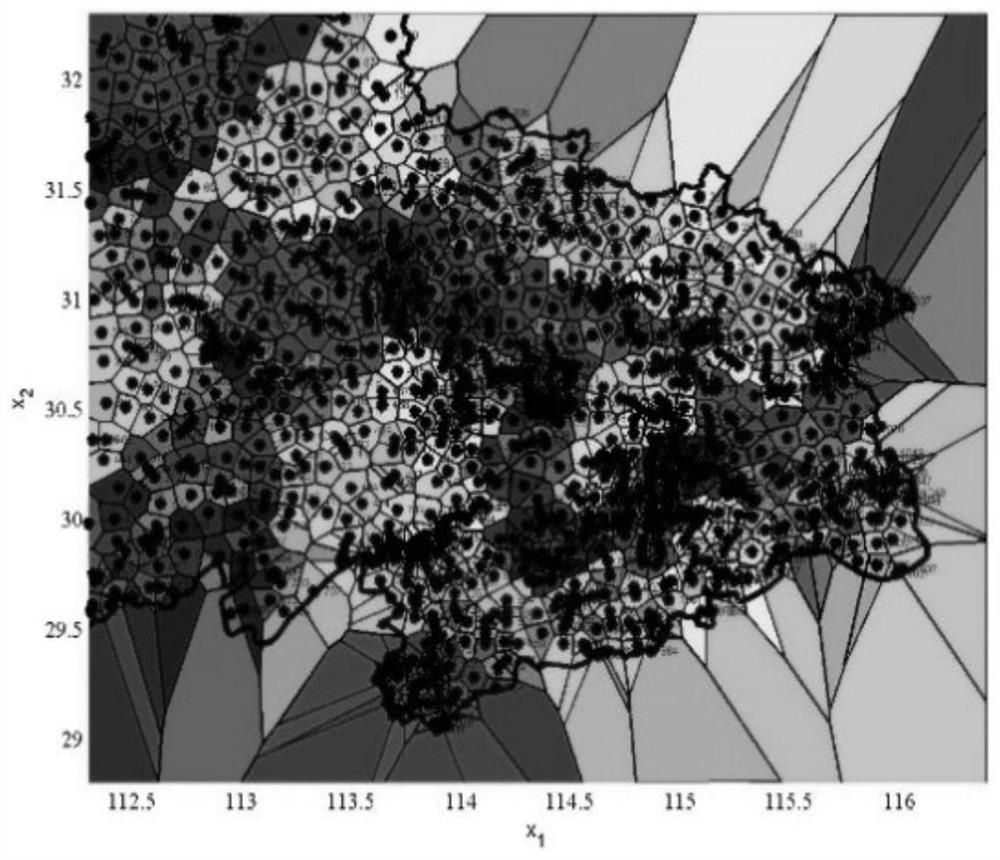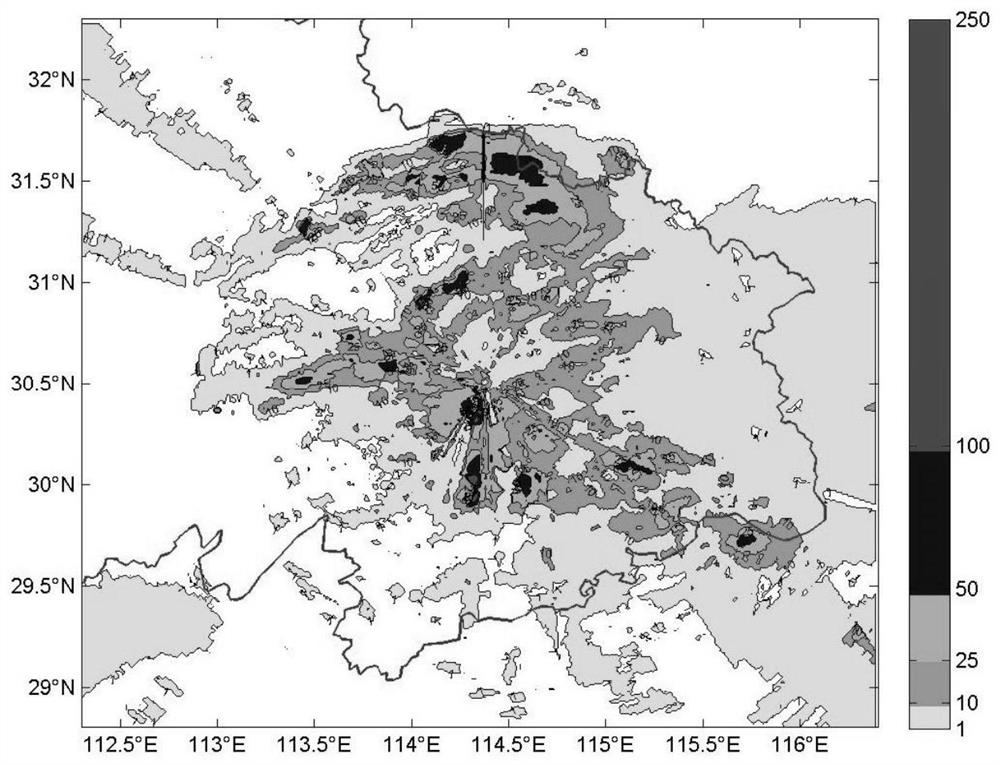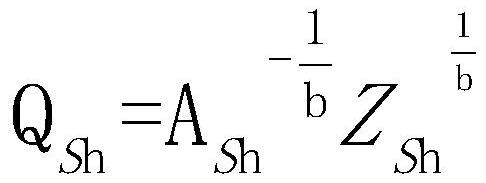Quantitative Precipitation Estimation Method Based on Dense Rainfall Stations
A rain gauge and dense technology, applied in the field of meteorological radar to estimate precipitation, can solve the problems that cannot accurately reflect the characteristics of changes in the local distribution of precipitation, and achieve the effect of avoiding errors
- Summary
- Abstract
- Description
- Claims
- Application Information
AI Technical Summary
Problems solved by technology
Method used
Image
Examples
Embodiment 1
[0030] Wuhan City is selected as the verification area for the quantitative precipitation estimation method based on dense rainfall stations of the present invention.
[0031] First, for the Wuhan radar rain measurement area, according to the distribution of the rainfall stations covered by it, the radar rain measurement area is divided by the Thiessen polygon method, and 1104 polygonal areas are obtained, as figure 1 shown.
[0032] Then, use the sum Q of rainfall in 1 hour at i rainfall stations in each small polygon area S Sh , and the basic reflectivity factor Z ih , according to the following formula, the Z-R relationship of each polygonal area S is obtained, that is, A Sh the value of
[0033]
[0034]
[0035] Among them, Z is the radar reflectivity factor, R is the rainfall intensity, A is the coefficient of the Z-R relationship, and b is 1.5;
[0036] A Sh Be the public coefficient of the selected polygonal area S;
[0037] Z Sh is the total radar reflect...
PUM
 Login to View More
Login to View More Abstract
Description
Claims
Application Information
 Login to View More
Login to View More - R&D
- Intellectual Property
- Life Sciences
- Materials
- Tech Scout
- Unparalleled Data Quality
- Higher Quality Content
- 60% Fewer Hallucinations
Browse by: Latest US Patents, China's latest patents, Technical Efficacy Thesaurus, Application Domain, Technology Topic, Popular Technical Reports.
© 2025 PatSnap. All rights reserved.Legal|Privacy policy|Modern Slavery Act Transparency Statement|Sitemap|About US| Contact US: help@patsnap.com



